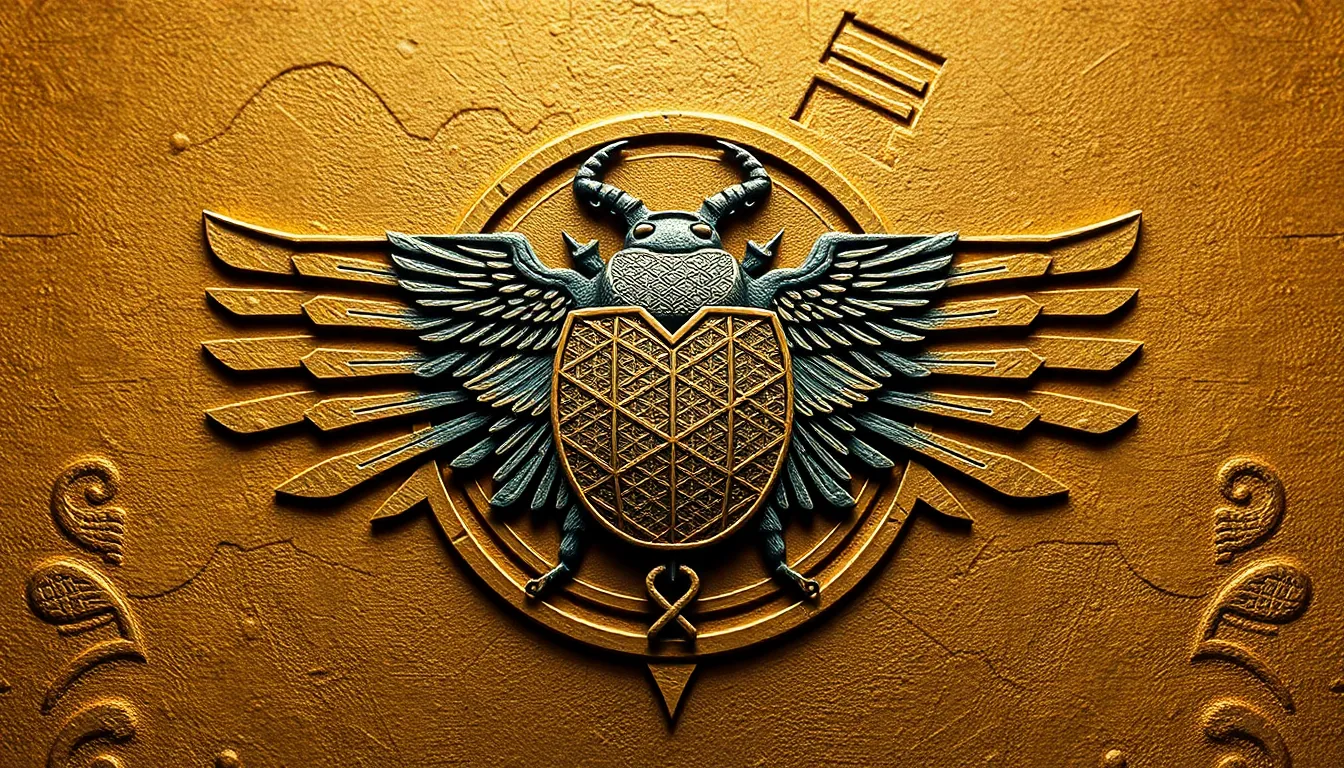The Geometry of the Sacred Scarab: Symbol of Rebirth
I. Introduction
The sacred scarab, or scarab beetle, has held a profound place in the mythologies and cultures of ancient civilizations, particularly in Egypt. This creature, known for its unique life cycle, has become a symbol of rebirth and transformation, embodying the cyclical nature of life and death. Central to this representation is the concept of geometry, which plays an essential role in the symbolism and artistry related to the scarab. This article aims to explore the geometric aspects of the sacred scarab and its enduring symbolism of rebirth.
II. Historical Context of the Sacred Scarab
The origins of the sacred scarab date back to ancient Egypt, where it was revered not just as a beetle but as a representation of the sun god Ra. The scarab was believed to roll the sun across the sky, a metaphor for the daily cycle of life and death.
- Origin and Cultural Significance: In ancient Egypt, the scarab was associated with creation and renewal. It was often depicted in art and amulets, symbolizing protection and the promise of regeneration.
- Connection to Ra: The scarab’s role as a representation of Ra highlights its significance in the cycle of life, symbolizing the sun’s journey and the promise of resurrection.
- Global Interpretations: Beyond Egypt, other cultures have adopted the scarab symbol, interpreting it through various lenses of spirituality and rebirth.
III. Geometric Representations of the Scarab
The scarab beetle exhibits remarkable geometric properties that are mirrored in the artifacts created by ancient artisans. The shape and symmetry of the beetle itself provide a captivating study of geometry.
- Shape and Symmetry: The scarab’s body is typically oval, showcasing symmetry that is aesthetically pleasing and mathematically interesting.
- Geometric Patterns: Scarab amulets often feature intricate geometric designs, including spirals and interlocking shapes that enhance their symbolic meaning.
- Mathematical Principles: The designs found in scarab artifacts can be analyzed using principles of geometry, such as symmetry, proportion, and balance.
IV. Symbolism of Rebirth in the Sacred Scarab
The life cycle of the scarab beetle closely parallels the themes of rebirth and regeneration central to many ancient belief systems.
- Life Cycle of the Scarab: The beetle lays its eggs in dung, which then transforms into new life. This process symbolizes the idea of renewal and the cyclical nature of existence.
- Funerary Practices: Scarabs were often placed in tombs, serving as protective amulets to ensure safe passage to the afterlife and rebirth in the next world.
- Resurrection Connections: The concept of resurrection, present in various cultures, is echoed in the symbolism of the scarab, representing hope and continuity beyond death.
V. The Scarab in Art and Architecture
The image of the scarab has been a prominent feature in ancient Egyptian art and architecture, reflecting its cultural importance.
- Depictions in Art: Scarabs are commonly found in wall paintings, sculptures, and jewelry, often conveying messages of protection and rebirth.
- Architectural Use: Temples and tombs frequently incorporate scarab imagery, reinforcing the sacredness of the symbol and its association with the divine.
- Modern Interpretations: Today, the scarab continues to inspire artists, designers, and spiritual seekers, leading to a revival of its motifs in contemporary art.
VI. The Role of Geometry in Spiritual Practices
Geometry has long been intertwined with spirituality, enhancing the symbolic meanings of various forms, including the sacred scarab.
- Intersection of Geometry and Spirituality: The precise shapes and patterns found in sacred geometry often reflect spiritual principles, enriching the understanding of symbols like the scarab.
- Enhancing Spiritual Significance: Geometric patterns can amplify the energy associated with the scarab, making it a powerful tool for meditation and reflection.
- Impact on Mindfulness: Engaging with geometric designs can foster a deeper connection to mindfulness practices, grounding individuals in the present moment.
VII. Contemporary Relevance of the Sacred Scarab
In modern times, there has been a resurgence of interest in ancient symbols, including the sacred scarab, reflecting a continued fascination with themes of rebirth and transformation.
- Modern Cultural Interest: The scarab has found its place in fashion, design, and popular media, often representing resilience and renewal.
- Fashion and Design: Designers frequently incorporate scarab motifs into jewelry and clothing, symbolizing protection and good fortune.
- Contemporary Spirituality: The themes of rebirth and transformation continue to resonate in modern spiritual practices, with the scarab serving as a powerful emblem of change.
VIII. Conclusion
In summary, the sacred scarab is not merely a representation of a beetle; it embodies rich geometric and symbolic significance that transcends time. From its historical roots in ancient Egypt to its modern interpretations, the scarab remains a powerful symbol of rebirth and transformation. As we continue to explore ancient symbols in our contemporary lives, the enduring legacy of the scarab invites us to reflect on our own journeys of renewal and the geometric patterns that shape our existence.




